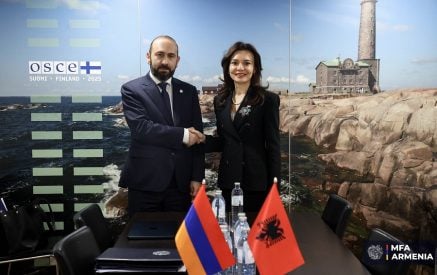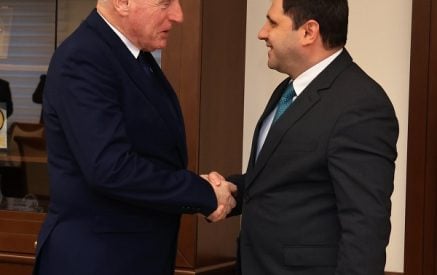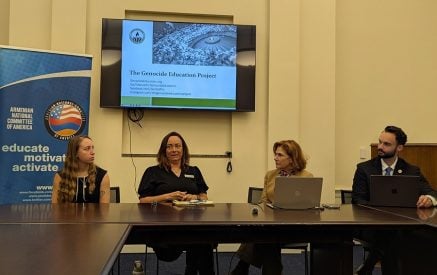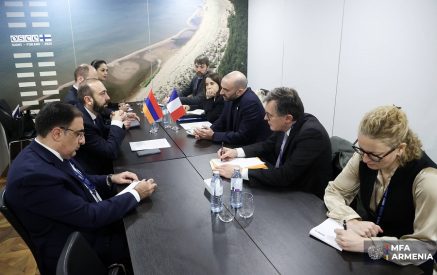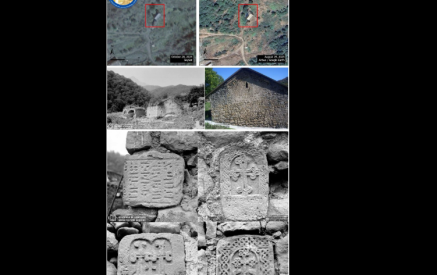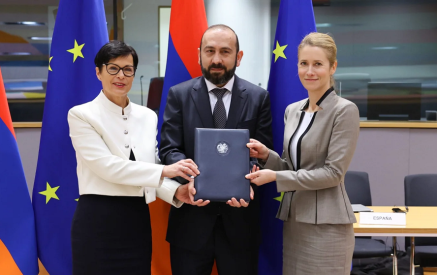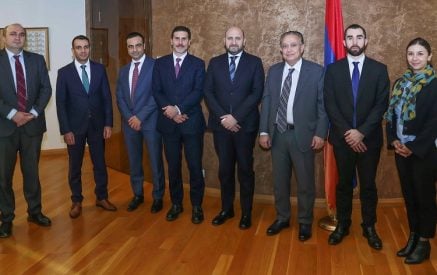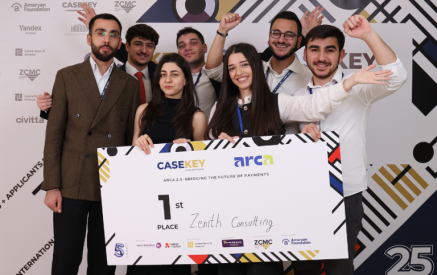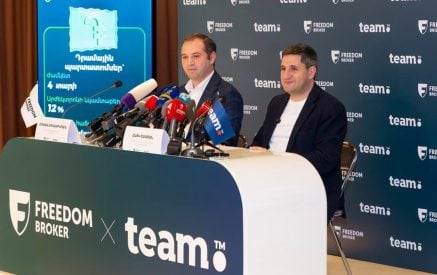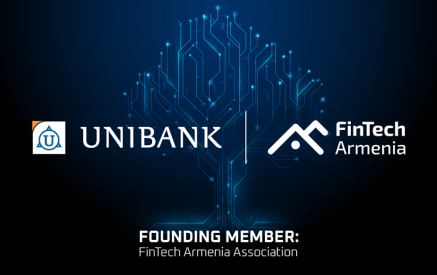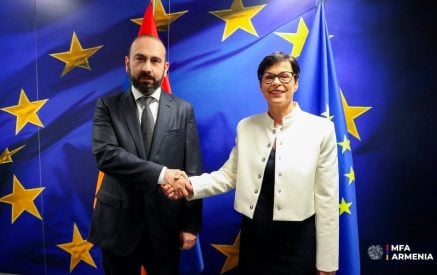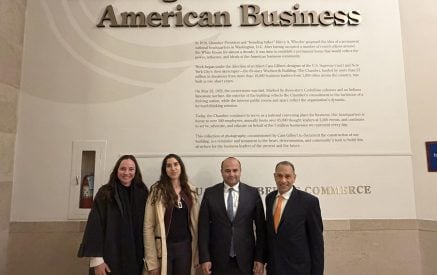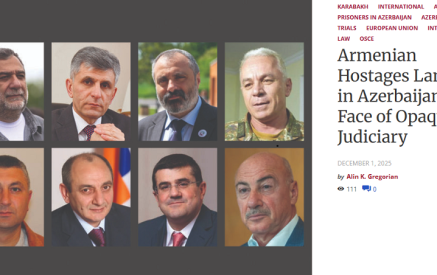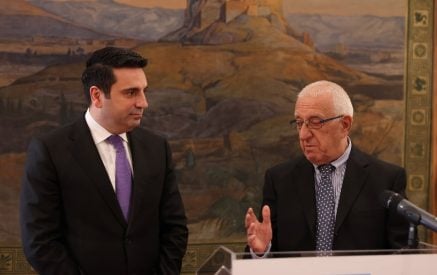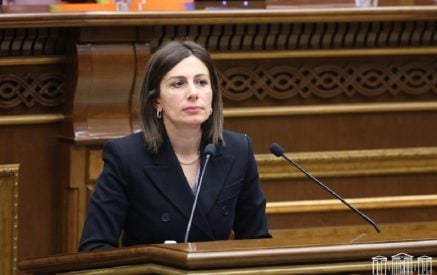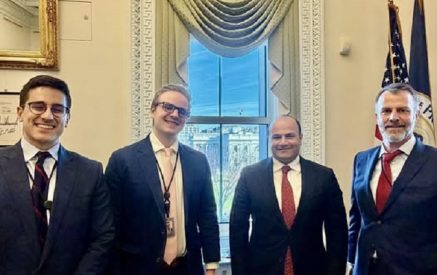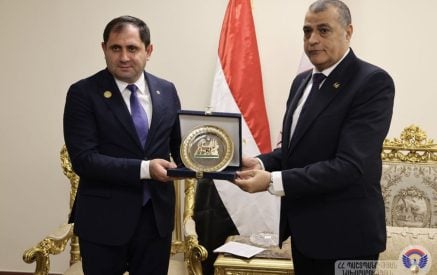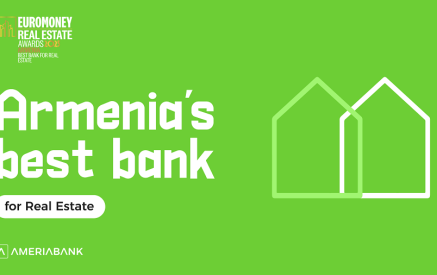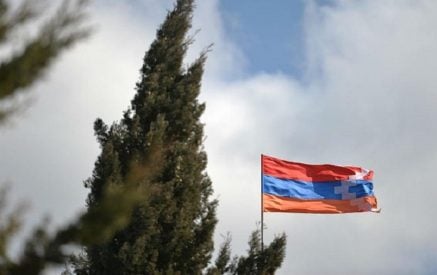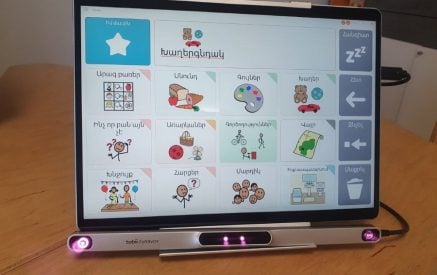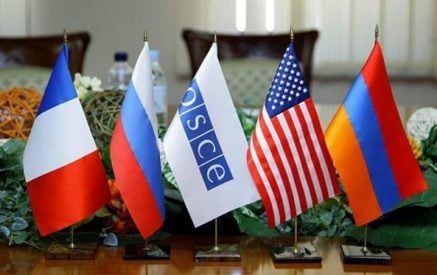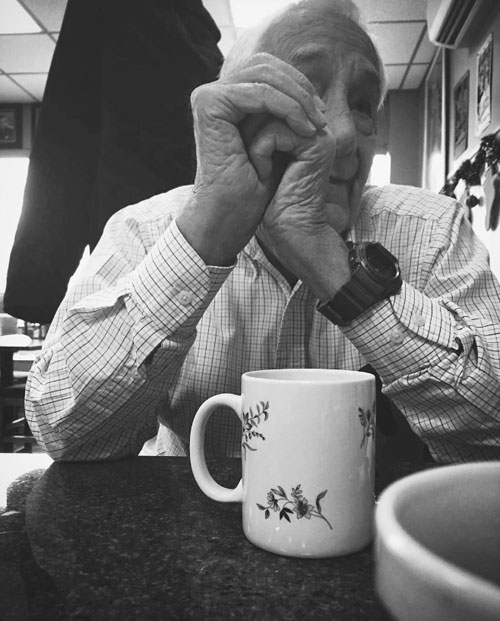By
armenianweekly.com. The survivors of the Ottoman Turkish genocide that took the lives of some 1.5 million Armenian men, women, and children were left traumatized, destitute, malnourished, ill, and torn from family and friends. Yet wherever chance took them, they were able to lay the foundation that has given us a Diaspora that is vibrant and dynamic and of incalculable importance to Armenia. Of some nine million Armenians today, (possibly more), about six million are spread throughout the Diaspora with the remaining three million, or so, residing in Armenia.
During the 70 years that Armenia was a Soviet republic, the Diaspora developed without a beneficial relationship with mer mayreni yergir (our homeland). However, a series of significant events occurred in almost rapid-fire succession that reconnected the Diaspora with the Motherland.
In 1988 the Spitak Earthquake devastated northwestern Armenia; within three years, the second free and independent Republic of Armenia was declared; and Artsakh (Nagorno-Karabagh), having successfully defended its declaration of independence against Azerbaijan, became a de facto state with the signing of the ceasefire agreement in 1994.
The Diaspora, or at least a segment of it, provided all manner of assistance—financial, humanitarian, technological, etc.—to help their country respond to the devastation and the difficult transition to an independent state. Added to this, were the needs of the Artsakh Armenians, as they began the laborious task of rebuilding a country laid waste by the Azeri military.
In any new cultural environment various processes—acclimation, acculturation, and assimilation—effectively compete to weaken institutional and organizational efforts to maintain identity. Therefore, it is not surprising that within successive generations born in the Diaspora, the need to identify as Armenian became less and less compelling. Given this erosive process, only a subsection of those born in the Diaspora develop a commitment to their Armenian identity.
The importance of identity has changed dramatically during the past hundred years. Our survivors, stripped of everything except their Armenian identity (and for some even that was taken from them), were assiduous in seeking to retain that one thing which connected them to their past. It was a vital therapeutic need that does not exist today where, with each succeeding generation born in the Diaspora, the personal connection to the genocide is replaced by narrative.
In both area and population, Armenia is the smallest country in the south Caucasus, with implacable enemies as neighbors. Two out of every three Armenians live in the Diaspora. Given this unequal distribution, it is important that a greater percentage of Armenians born in the Diaspora remain connected to their Motherland.
The Importance of Dual Citizenship
Since more Armenians are born in the Diaspora than in Armenia, it becomes important that these future generations are not lost to the nation. Dual citizenship, properly structured, is a means by which Armenia and the ever expanding Diaspora remain connected. Dual citizenship draws on the feeling one has for his identity and the land of his forebears. As an opportunity, it can also be the catalyst to awaken those feelings. Presently, the value of dual citizenship especially for Armenia (and the Diaspora) has not been fully explored.
This is a task for a revamped Ministry of the Diaspora (with input from the Diaspora) to determine the benefit to Armenia and the Diaspora of dual citizenship. Any outreach program should have an educational component that conveys to resident citizens, among other concerns, that the right to vote would still be governed by residency requirements. One can appreciate the apprehension created if dual citizens could influence elections that could adversely affect the lives of resident citizens.
The more ways each of us is connected to our country, the more valuable in the aggregate we become. In turn, a dynamic and secure Armenia is the source that nourishes our far-flung communities in the Diaspora and their incoming generations from morphing into an unidentifiable mélange of humanity.
Dual citizenship, properly structured, is a means by which Armenia and the ever expanding Diaspora remain connected. Dual citizenship draws on the feeling one has for his identity and the land of his forebears. As an opportunity, it can also be the catalyst to awaken those feelings.
Unfortunately, negative notions of conditions in Armenia (some true, some false, and some exaggerated) discourage many in the Diaspora from seeking dual citizenship. These misconceptions have serious implications. They dampen any willingness to participate in Armenia’s development either personally or financially; they tend to erode any feeling for their Armenian identity; and finally, they discourage any interest in visiting their homeland. Those who do visit have business, professional, organizational, or educational interests; to visit relatives; or to see where parents or grandparents came from. Very few born in the Diaspora view Armenia as a vacation destination.
An Added Incentive
Dual citizenship also had a very personal meaning, which took hold after my first visit to Armenia some years ago. Not only was it motivated by a desire to connect with my dad’s past, but by my firm belief that it was an important way for us in the Diaspora to convey our faith in Armenia and its people.
I am not the quintessential Armenian, yet my feeling Armenian has been part of my essence since childhood. It was neither the product of family immersion, nor organizational indoctrination. I was brought-up in an atypical Armenian home. I say atypical, because my generation normally had parents who were born overseas. The principal language spoken in the home was Armenian, which persisted even when the children had become acculturated or were born here.
My mom was born in the United States. Her Armenian parents had emigrated from the Adana region during the mid-1890’s. My dad was born in Kesrig (Keserig), one of the many villages that surrounded Kharpert. He was 17 when his mother prevailed upon him to leave Kesrig. It was 1913 when he journeyed to Trabzon with a friend where they embarked on a vessel for Constantinople. From there he took a freighter to Liverpool, England, where he lived for several years before reaching the United States.
My mom was fluent in English and had a decent command of the Armenian language. My dad was fluent in Armenian and knew Turkish as well as English. However, Armenian was the language spoken at home.
Unfortunately, my dad died a few months before my eighth birthday. That was a transformational event. From then on, English became the principal language at home. My memories of my dad are few, but vivid. Much later I learned that a delegation from the local Armenian Revolutionary Federation (ARF) gomidehoutiun (chapter) visited our home when he died. My recollections sitting in his big touring sedan going to the beach or to the picnics has stood the passage of time. His passing effectively severed my direct link to his past and to Armenia. How I would have enjoyed knowing in detail all that he would have been able to tell me and the discussions we could have had.
Again, atypically, we did not live in an Armenian section of the city. Ghetto is the appropriate term, but it has a pejorative connotation for many people. It simply refers to an area of a city where an ethnic group concentrates for various reasons. We attended Armenian church and church functions and had the Der Hayr bless our home. On occasion we would accompany my maternal grandfather to Dashnak (ARF) events or the picnics that were so common. Yet, we lived on the margins of the community. It was not until after my undergraduate days that I became active within the Armenian community.
The Process
When I checked the requirements for dual citizenship it wasn’t an “ask and you will receive” procedure, as some friends had suggested. Required was a 28-question application form, a certificate of baptism to prove Armenian ancestry, a birth certificate, a current passport and six colored passport size photos. In Yerevan, the wife of an unger was of immeasurable help. We went to the Writers’ Building on Bagramian Street to have the documents officially translated into Armenian. Since my birth certificate did not have the required apostil (which had not been stated as a requirement), it was not accepted.
I am not the quintessential Armenian, yet my feeling Armenian has been part of my essence since childhood.
Upon returning home, an appropriate birth certificate was obtained. With all documents in-hand, it was required to deliver them in-person to the Consular Office at the Armenian Embassy in Washington, D.C. About six months later, toward the end of November, notification was received that I should come to Armenia to complete the process at the Passport and Visa Office (OVIR) located in the Davtashen district in Yerevan.
At the passport office there were more questions and documents to sign, additional fees to pay, and another photo taken. I was told to return in three days to obtain my passport. When I did, I joined about 17 others. Following a brief informational talk and the playing of Mer Hairenik, we were called individually to sign a document and our Republic of Armenia passport.
The following morning after breakfast I sat for a while in Charles Aznavour Square next to my hotel on Abovian Street. It was a ritual I usually followed before going about my daily activities.
That Saturday—July 16, 2016—was special.
It was my first day as a citizen of Armenia.


















